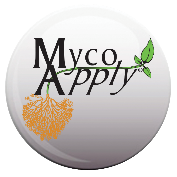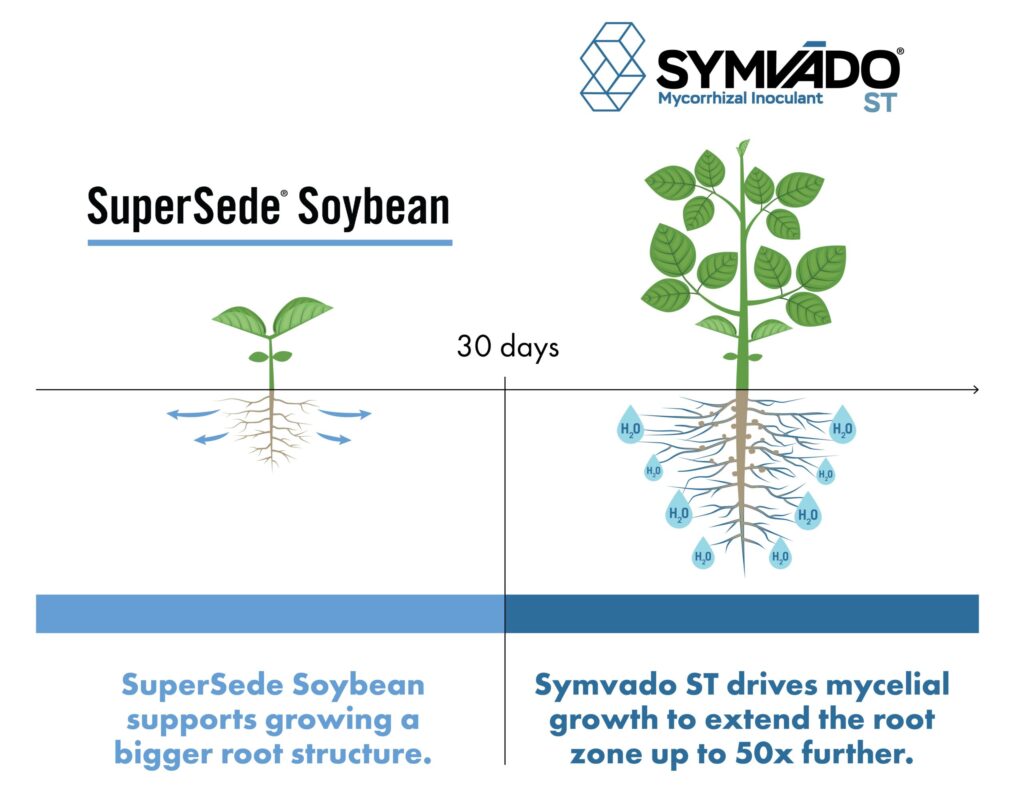Laying the Groundwork for Success
There are many factors that contribute to a successful soybean crop, but one constant we see each year is that getting the soybean crop off to a good start is critical for success. Fast germination, uniform emergence, and vigorous root systems set the stage for success throughout the growing season. Achieving early season success is crucial for hitting those top-end yield goals.
Seed treatments continue to be reliable tools for protecting the seed from early threats like diseases and insects. While traditional seed treatments remain effective tools, the industry has begun to recognize the benefits offered by biological seed treatments. Not only can biological seed treatment solutions promote early season plant health, but they can also provide season-long benefits. These advanced treatments can deliver the long-term advantage of a more robust root system that can deliver on greater access to water and nutrients, even when stress conditions prevail.
Developing Strong Roots
Soybean root development is critical for the plant’s success during the growing season. Key aspects of soybean root development include:
- Primary Root Formation: After germination, the primary root emerges and grows downward, anchoring the plant. Adequate moisture and nutrient availability are critical during this stage.
- Lateral Root Development: As the primary root grows, it produces lateral roots (sometimes called secondary roots) that extend horizontally, increasing the root surface area for better nutrient and water absorption. Adequate levels of auxins and the availability of essential nutrients encourage lateral root development, leading to a more extensive root network. This robust root system enhances the plant’s resilience to stress and improves access to soil resources.
- Tertiary Root Development: Tertiary roots develop off the lateral roots, enhancing the plant’s ability to access nutrients and water from finer soil particles. Increased tertiary root development further improves nutrient uptake efficiency and enhances soil stability, helping the plant better withstand drought and other environmental stresses.
Root development is influenced by environmental factors like soil type, temperature, moisture, and the presence of pathogens or pests. Healthy root development is vital for maximizing soybean yield and ensuring the plant’s adaptability to different growing conditions.
SuperSede® Soybean

- Better Germination
- SuperSede Soybean improves plant uniformity and stand establishment
- Enhanced Root Growth & Nodulation
- Amplify early root growth and nodulation development for improved nitrogen fixation
- Complementary Nutrition
- Formulated with key nutrients to further aid seedling growth
SuperSede Soybean is a biostimulant seed treatment powered by Transit® biostimulant with complementary soybean nutrition that increases germination and supports early root growth for uniformity and establishment. SuperSede also supports increased nodulation for improved nitrogen fixation. In a trial conducted on soybeans, SuperSede Soybean resulted in a 4% greater stand count 28 days after planting and ultimately a 1.8 bushel/acre higher yield at harvest.
Symvado® ST

Symvado ST is a mycorrhizal inoculant seed treatment powered by MycoApply® Arbuscular Mycorrhizal Fungi (AMF). Symvado ST enhances the root absorption area, resulting in increased nutrient and water uptake and efficiency. It also positively impacts the soil environment for improved soil structure.
- Enhanced Root Area
- Hyphae create a fungal network that extends root absorption area up to 50x
- Nutrient Absorption
- Hyphae increase access to water and nutrients, reaching micropores inaccessible by root hairs
- Water Holding Capacity
- Glomalin produced by fungal network contributes to increased soil aggregation for improved water holding capacity
A compilation of 20 Symvado ST soybean trial locations across the Midwest and into the Mississippi Delta showed an average yield increase of 1.7 bu/A. The trials in Tennessee and Arkansas averaged a 4.6 bu/A increase alone, showing that specific positioning when using Symvado ST can be important. The data has shown that the more stress-prone areas are going to show a greater response to Symvado versus untreated plants.
The Synergistic Benefits of SuperSede Soybean and Symvado ST

Recent studies showcase how using SuperSede Soybean and Symvado ST together maximizes the benefits of both products. SuperSede Soybean acts early in the plant’s life to grow a bigger, more robust root system while Symvado ST takes advantage of that larger root system to deliver season-long benefits.
For more information, visit valentbiosciences.com/biostimulants






